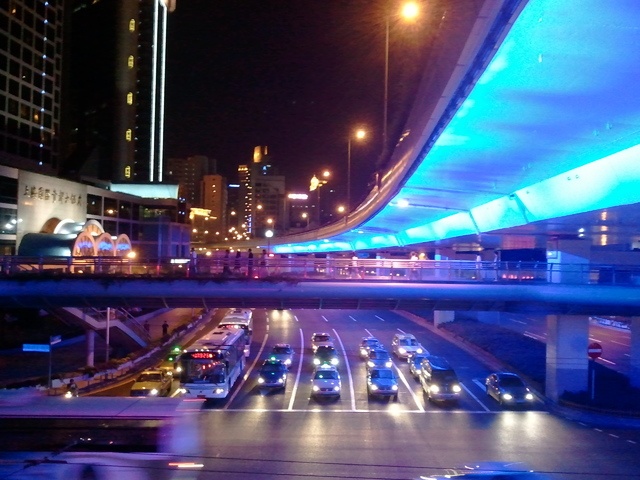
Uploaded on 2014-12-09 by VincentAB
[1]: http://s1.postimg.org/hfcbpv71b/2011_08_26_20_54_33.jpg The photo above depicts a three-level road intersection in Shanghai, China. While the fast road traffic occupies the space above the photographer, the intersecting traffic is kept at street level. Pedestrians are restricted to the intermediate level, which they access by regular stairs like those visible in the lower left corner of the image. While local urban managers and planners may think it is an easy way of separating traffic flows, this structure brings a number of negative side effects on the surrounding urban spaces and architecture, as well as to the city as a whole. First, it encourages car transport in a city already famous for its pollution levels. The higher speeds enabled by elevated roads undermine the advantages of public transport, too. It also brings transit traffic into the very center of the city, attracting air and noise pollution during the day as well as the night. Secondly, it affects pedestrian permeability of the area, creating a barrier between the two zones separated by the elevated road. Cycling safely and comfortably across this intersection is difficult, too. Sneaking within the car traffic below might seem a suicidal attempt, while taking one's bike up on the foot-bridge is out of the question. A consequence of this situation is that it hinders the commercial attractiveness of the parcels along the road, which are forced to open towards other sides and streets. If they happen to be residential buildings, not too many lights will be on, neither dwellers will be seen gazing out on the windows, giving this large artery even more of a "backstreet" atmosphere. In order to create sustainable transport infrastructure in developing & future cities, we have to learn from our past and current mistakes and distinguish the best working solutions from experience. Efficiency shouldn't be the only criterion, instead we should offer an integrated response covering pollution, accessibility, architectural quality and commercial value of the urban space.